Best API Integration Tools for Laravel to Buy in December 2025

Anthropic API for AI App Developers: Build Production-Ready Intelligent Systems with Messages API, Tool Integrations, and RAG Workflows


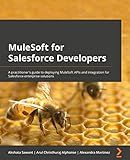
MuleSoft for Salesforce Developers: A practitioner's guide to deploying MuleSoft APIs and integrations for Salesforce enterprise solutions


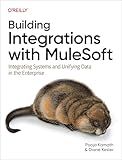
Building Integrations with MuleSoft: Integrating Systems and Unifying Data in the Enterprise


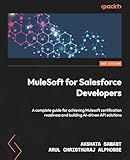
MuleSoft for Salesforce Developers: A complete guide for achieving Mulesoft certification readiness and building AI-driven API solutions


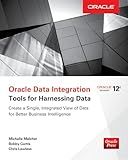
Oracle Data Integration: Tools for Harnessing Data



API Success: The Journey to Digital Transformation



Generative AI Application Integration Patterns: Integrate large language models into your applications


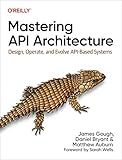
Mastering API Architecture: Design, Operate, and Evolve API-Based Systems


To login with an API in Laravel, you can follow these steps:
- Create an API controller that handles the authentication process. This controller will be responsible for handling login requests from the client.
- In the controller, define a method that receives the login credentials (usually username/email and password) as input parameters.
- Use Laravel's built-in Auth facade to attempt to authenticate the user. You can call the attempt method to verify the provided credentials against the user's credentials stored in the database.
- If the authentication is successful, generate an API token for the authenticated user. You can use Laravel's built-in str_random method to generate a random string that serves as the API token.
- Store the generated token in the api_token column of the user's table in the database.
- Return the generated token as a response to the client. This token will be used for subsequent requests to authenticate the user.
- On the client-side, store the received token securely (e.g., in local storage or a cookie) for future API requests. You can include this token in the request headers for authentication purposes.
- For all subsequent API requests that require authentication, include the generated token in the request headers as an "Authorization" header. You can set the header value to "Bearer {your_token}" to comply with the Bearer Token authentication standard.
- In the API routes or middleware, include authentication checks to verify the provided token with the token stored in the database for the respective user.
- If the token is valid, allow access to the requested API endpoint. Otherwise, return an authentication error response.
By following these steps, you can implement API login functionality in Laravel and ensure secure authentication for your API endpoints.
What is Laravel?
Laravel is a free, open-source PHP framework used for web application development. It provides a simple and elegant syntax, along with various features and tools to streamline the development process. Laravel follows the Model-View-Controller (MVC) architectural pattern, making it highly modular and scalable. It includes features like routing, caching, session handling, authentication, and database management, among others. Laravel also has a large and active community, which helps in providing support and extensions to enhance the development experience.
What is an API in Laravel?
In Laravel, an API (Application Programming Interface) refers to a set of rules and protocols that allows different software applications to communicate with each other. It provides a way for developers to access and interact with a web application's data and services, and enables the application to be easily used and integrated with other systems.
In Laravel, an API can be built using various techniques and components provided by the framework, such as routes, controllers, middleware, and HTTP response formats (such as JSON or XML). By defining routes and controllers specifically for handling API requests, developers can create endpoints that can be accessed by external clients or other applications.
Laravel also offers features like authentication and authorization, rate limiting, versioning, and response transformations, which can be used to enhance the security and functionality of the API. Additionally, the framework provides tools like Laravel Passport and Laravel Sanctum for implementing OAuth and token-based authentication in APIs.
Overall, an API in Laravel allows developers to expose the functionality of their web applications in a structured and consumable manner, making it easier to integrate with other systems.
Can you provide an example of implementing API login with JSON responses in Laravel?
Sure! Here's an example of implementing API login with JSON responses in Laravel:
First, create a login API route in routes/api.php file:
Route::post('login', 'AuthController@login');
Next, create the AuthController and implement the login method:
namespace App\Http\Controllers;
use Illuminate\Http\Request; use Illuminate\Support\Facades\Auth; use Validator;
class AuthController extends Controller { public function login(Request $request) { $credentials = $request->only('email', 'password');
$validator = Validator::make($credentials, \[
'email' => 'required|email',
'password' => 'required',
\]);
if ($validator->fails()) {
return response()->json(\['error' => 'Invalid credentials'\], 401);
}
if (Auth::attempt($credentials)) {
$user = Auth::user();
$token = $user->createToken('MyApp')->accessToken;
return response()->json(\['token' => $token\]);
}
return response()->json(\['error' => 'Unauthorized'\], 401);
}
}
In this example, we first validate the provided credentials. If they are invalid, we return a JSON response with an error message and a 401 status code.
If the credentials are valid, we attempt to authenticate the user using Laravel's Auth facade. If the authentication is successful, we generate an access token using Laravel Passport (assuming you have it set up) and return it as a JSON response.
Finally, if the authentication fails, we return a JSON response with an error message and a 401 status code.
Note: This example assumes you have a User model in your Laravel application and that you have properly configured and set up Laravel Passport for API authentication.
Can you provide an example of implementing API login with Laravel Sanctum?
Sure! Here's an example of how you can implement API login with Laravel Sanctum.
Step 1: Install Laravel Sanctum First, you need to install and configure Laravel Sanctum in your Laravel project. Open your terminal and run the following command:
composer require laravel/sanctum
After installing Sanctum, you should publish its configuration file by running the following command:
php artisan vendor:publish --provider="Laravel\Sanctum\SanctumServiceProvider"
Step 2: Implement Login Controller Create a new controller, for example, AuthController, and define two methods: register and login. Here's an example:
